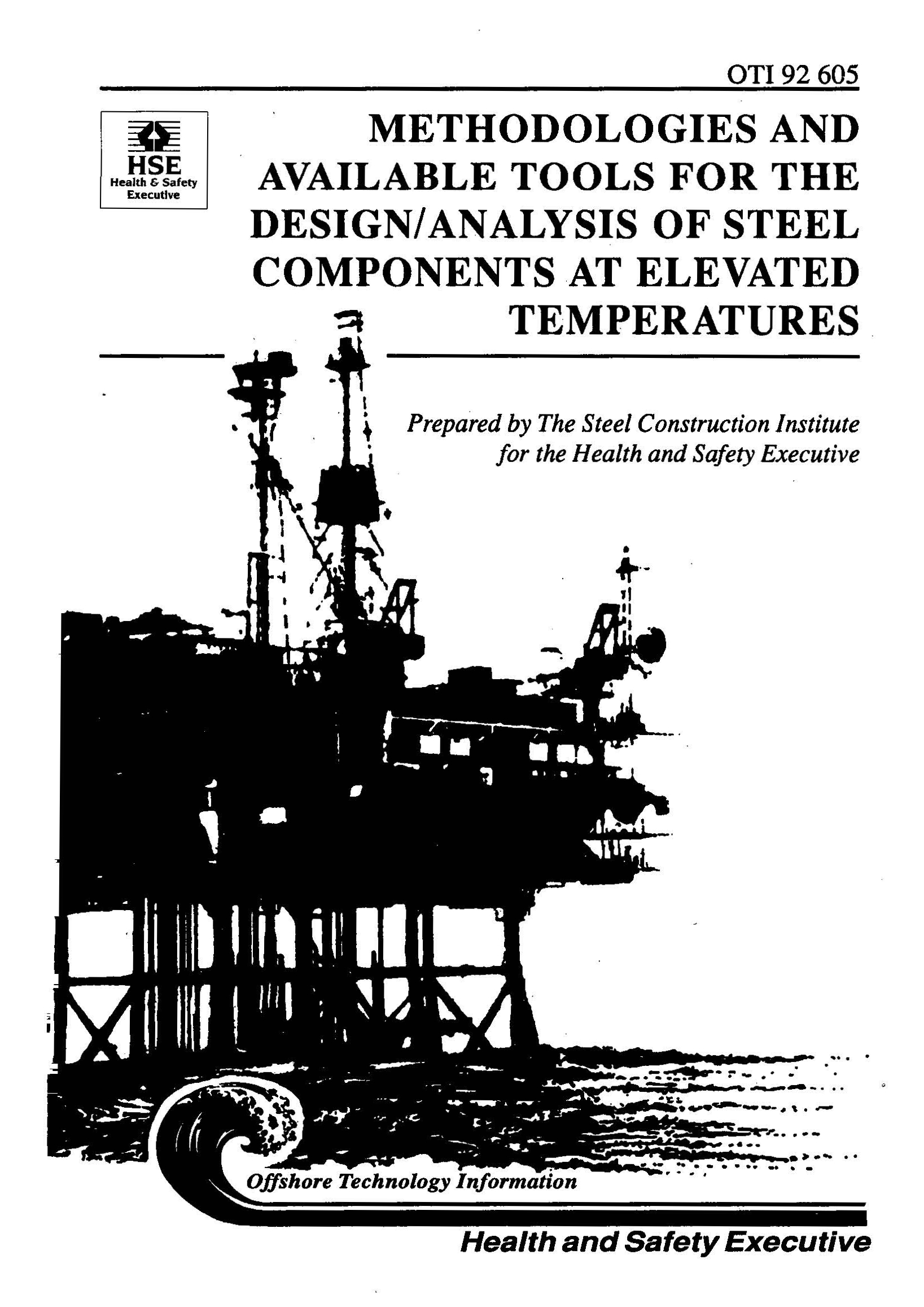HSE OTI 92 605
Methodologies and available tools for the design/analysis of steel components at elevated temperatures
Work Package FR2
BFETS Phase 1

FABIG Members: Log-in to access all FABIG resources LOG IN
SUMMARY
In Work Package FR2, the methods and tools available to undertake the analysis of structures and components of steel structures under fire-loading conditions have been examined.
Previous work on the subject includes simulation and prediction of the behaviour of passive fire protection in furnace fire tests. This has proved to be an economical tool for the comparative evaluation of passive fire protection materials, but as the tests do not quantify specific fire performance parameters and are limited to simple members, they do little to further the understanding of steel structures under fire-loading conditions.
The behaviour of structural steelwork in fires may be predicted from knowledge of structural mechanics, heat transfer, material properties at elevated temperatures and a description of the fire-loading. Heat flux data will be required to describe the fire character.
The suitability of a large number of commercial and research analysis programs has been examined. Whereas a number of programs provide a general finite element framework into which an analytical scheme can be threaded, there is no single program which offers a clear appreciation of the needs of offshore structural fire-resistant design. The analyst requires explicit control over material variables to undertake fire analysis and this facility is not always available.
Commercially available programs can be categorized into (i) Offshore programs and (ii) General finite element programs. If a program falls into either of these groupings then some clear understanding of its capabilities can be easily made. Offshore programs can perform code-checks general purpose programs can provide thermal analysis.
The ECCS (European Convention for Constructional steelwork) formula for strut stability is identified as the foundation for describing a 'code-check' equation for offshore fire purposes. A modified AISC code-check is compared with the ECCS equation and is found to be suitable for design purposes.
The code-check and progressive collapse methods are described in detail. The analysis of a module frame under thermal loads is presented and the difference between 'global' and localized temperature loads is emphasized.
A simple check on the analytical abilities of a computer-based system is described.
A listing of computer analysis programs and their suppliers is presented. The list is dated Spring 1991.
The full report is publicly available from the HSE Website at www.hse.gov.uk/research/otipdf/oti92605.pdf.
Online purchase options:
Non-Members of FABIG are able to purchase PDF copies of the reports.